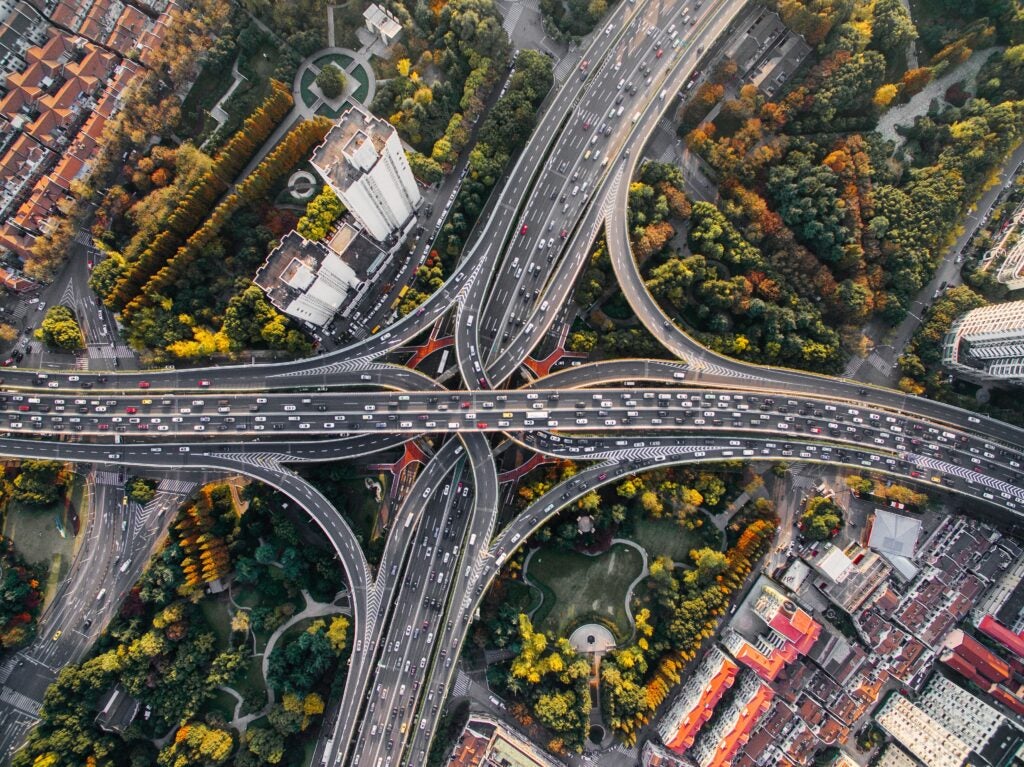Reimagining Cities: The Future of Urban Planning
An interview with Dr. Christopher Pyke of the Georgetown Urban & Regional Planning Program, by Common Home editor Mark Agard.

Mark: Would you say we’re in a transitional period in urban planning right now?
Chris: Yes, we are having a revolution that is on the order of the interstate highway system. It’s on the order of the initial provision of electricity, and of white flight from cities in the 50s, 60s, and 70s. We are having a moment that big. It may not be as obvious as all the white people leaving cities, and it may not be as obvious as an incredible network of interstates, but we are fundamentally rewiring cities.
We’re completely changing how cities create and consume energy. We are dealing with the maturation of the Internet as a disruptive technology. We had a once in a century pandemic. That had a profound impact on urban development, along with a profound awakening about the inequities that are in cities today. It’s this combination of events that has contributed to a generational opportunity for positive change.
Mark: Are young urban planners, like your students, optimistic about heading into all of these diverse challenges?
Chris: I think urban planners are fundamentally urban problem solvers. If you get into this field, you want to solve urban problems and so that I think comes with an optimism. You have to be an idealist to want to do that.
I also see my students becoming more diverse. Some of them are highly technical, I’ve had folks who really want to go into technology or startups, some are really committed to policy and social change. The theme is of an increasing breadth in diversity, often accompanied by a passion for place making. Personally, I am optimistic about where this will take the profession, and by extension, cities.
A perennial question is “if these things make so much sense why aren’t things better already?” Then young planners have to go into a professional setting and collide with the status quo, and that is tough right because you’re like “why can’t we make better changes faster?” I think the urban planning dilemma is that conflict between the idealism, the true desire to solve problems, and that status quo. The most successful planners find a way to hold onto their passion and optimism while being realistic and pragmatic about how they drive change.
Mark: What do you mean by “collide with the status quo?” What do young planners collide with?
Chris: Right? Who’s against good stuff? What surprises students, as an example, is some urban planners having a tradition of something I might call “planning and praying.” In other words, they plan and they hope it works. The only reason they go back and look at a project is if it goes so badly that it causes controversy.
There is a culture of just doing without stopping and checking to see if it worked. I think some of my students go into the real world and they find that the pressure to finish projects means there’s never time to see if something worked. Urban planners are overburdened and it’s not that they don’t want to do the right thing, but they need to get today’s job done.
New planners sometimes find themselves drowning in this process – without an obvious way to make the positive change that originally drew them to the profession.
We’re completely changing how cities create and consume energy. We are dealing with the maturation of the Internet as a disruptive technology.
Dr. Christopher Pyke
Mark: I’m going to change directions a bit, but I’m curious as to whether or not there is accepted doctrine among planners for responding to climate change. If not, how are urban planners meeting that challenge?
Chris: Sure, let’s split it between resilience (also known as adaptation) and mitigation. Think of resilience as action to understand and improve the response of cities to changing conditions. Conversely, climate mitigation is action to reduce the drivers of those changing conditions – anthropogenic greenhouse gas emissions.
Resilience, I think, is fundamentally more diverse. There is an acceptance that cities need to examine their vulnerability and plan for greater resilience in both social and physical systems. While Big Picture changes are related, specific impacts and circumstances vary widely from place to place. That means that activities to promote resilience in Washington, D.C. can be quite different from those in say, Cleveland – different challenges, different populations, different infrastructure.
On the climate mitigation side, I do think a paradigm or at least conventional wisdom is coming into focus. We’re going to drive out fossil fuel combustion. We are going to electrify everything. We’re going to meet our energy demand with clean energy. Ultimately, we’re going to do this for transportation, buildings, and much more.
The clarity around that vision is the strongest I’ve seen in 20 years. It doesn’t make it easy because each one of those is a major challenge and there’s all sorts of details, but the basic premise is clean energy electrification and drive out combustion.
Mark: Thank you so much for your time. Do you have any final thoughts for our readers?
Chris: I’ll just say to wrap it up, that planners at Georgetown today are urban problem solvers. That’s why they come to it, because they have some passion, optimism, and a drive to contribute to positive change. Their focus varies: it could be climate, it could be resilience, it could be equity, it could be health. They confront these issues with the knowledge and the tools that they have, and try to make positive change. Sometimes that’s a grind, sometimes that’s a breakthrough, but that’s kind of how it works.
Note: Minor edits have been made for clarity and concision.
